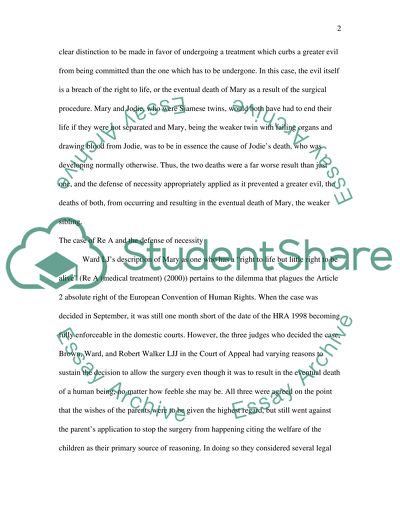Cite this document
(“Mary has a right to life but little right to be alive per Ward LJ, Re Essay”, n.d.)
Retrieved from https://studentshare.org/environmental-studies/1411731-mary-has-a-right-to-life-but-little-right-to-be
Retrieved from https://studentshare.org/environmental-studies/1411731-mary-has-a-right-to-life-but-little-right-to-be
(Mary Has a Right to Life But Little Right to Be Alive Per Ward LJ, Re Essay)
https://studentshare.org/environmental-studies/1411731-mary-has-a-right-to-life-but-little-right-to-be.
https://studentshare.org/environmental-studies/1411731-mary-has-a-right-to-life-but-little-right-to-be.
“Mary Has a Right to Life But Little Right to Be Alive Per Ward LJ, Re Essay”, n.d. https://studentshare.org/environmental-studies/1411731-mary-has-a-right-to-life-but-little-right-to-be.


